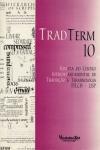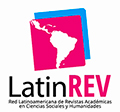Corpus-based translation studies: where does it come from? Where is it going?
DOI:
https://doi.org/10.11606/issn.2317-9511.tradterm.2004.47039Keywords:
Cultural studies, universals, corpus linguistics, Descriptive Translation Studies, applied corpus-based translation studies, critical linguistics, theoretical corpus-based translation studies, descriptive corpus-based translation studies.Abstract
The idea of investigating translation and translating through corpora was first put forward by Baker in 1993. At the time it was envisaged that in this new partnership Corpus Linguistics would provide the methodology for carrying out empirical investigations while translation theory would identify the areas of enquiry and elaborate operational hypotheses. The two partners would work in harmony mainly for the benefit of the advancement of the descriptive branch of the discipline. Since then the partnership has acquired a clear identity with a specific denomination, Corpus-based Translation Studies (CTS). Its areas of research range from descriptive to applied studies, and concern many different languages. In this paper I will examine the links existing between CTS, Corpus Linguistics and Descriptive Translation Studies (DTS) with a view to establishing which claims put forward in the past still hold true and which are the most fruitful areas of long-term CTS research. My paper is organised in three chronological sections each corresponding to a salient moment in the history of CTS. The first two years 1993-1995 see the dawn of CTS, the period of time between 1996 and 1999 represents what I see as the corpus linguistic turn in Translation Studies, while from 2000 onwards it is plausible to envisage a cultural studies turn in CTS.
Downloads
Downloads
Published
Issue
Section
License
Autores que publicam nesta revista concordam com os seguintes termos:
- Autores mantém os direitos autorais e concedem à revista o direito de primeira publicação, com o trabalho simultaneamente licenciado sob a Licença Creative Commons Attribution BY-NC-SA que permite o compartilhamento do trabalho com reconhecimento da autoria e publicação inicial nesta revista.
- Autores têm autorização para assumir contratos adicionais separadamente, para distribuição não-exclusiva da versão do trabalho publicada nesta revista (ex.: publicar em repositório institucional ou como capítulo de livro), com reconhecimento de autoria e publicação inicial nesta revista.
- Autores têm permissão e são estimulados a publicar e distribuir seu trabalho online (ex.: em repositórios institucionais ou na sua página pessoal) a qualquer ponto antes ou durante o processo editorial, já que isso pode gerar alterações produtivas, bem como aumentar o impacto e a citação do trabalho publicado (Veja O Efeito do Acesso Livre).








